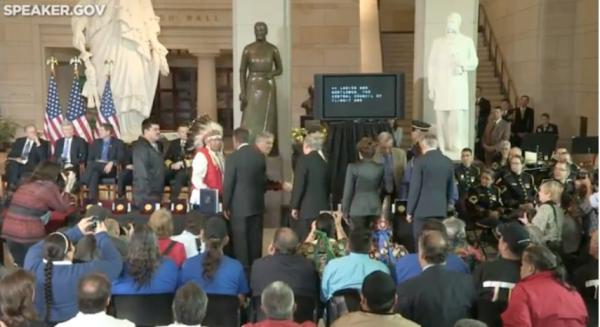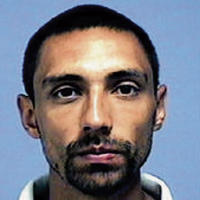
By Vincent Schilling, November 20, 2013, ICTMN
This morning at 11 a.m., Native American Code Talkers from 33 tribes were honored at the nations Capitol in Washington D.C. Taking the limelight with such notable historical figures as Rosa Parks, Mother Teresa and Astronauts, the Native Code Talkers and their prospective tribes were awarded Congressional Gold Medals.
A plethora of Senatorial and Congressional notables were present at the awards ceremony to include House Speaker John Boehner’s (R-OH), Tom Cole (R-OK), Ron Kind (D-WI), Sen. Tim Johnson (D-SD), Sen. Jim Inhofe (R-OK), Minority Leader Nancy Pelosi (D-CA), Sen. Mitch McConnell (R-KY), and Sen. Harry Reid (D-NV).
Also in attendance were family members and tribal leaders representing the Native Code Talkers as well as 96-year-old Edmond Harjo.
Speaker John Boehner opened the ceremony by applauding the efforts of Harjo who had recognized a fellow soldier’s language in 1944 and was later utilized by the U.S. military as a code talker.
“Edmond and his brothers were at Normandy and Iwo Jima and they mobilized the weapon of language to thwart the fiercest enemy the free people have ever known and made a difference …join me in applauding their perseverance and the deeds that have been relegated to legend and may they now live in memory,” said Boehner.
Native American Congressman Tom Cole then shared his thoughts. “It is an enormous honor for me to get to share this moment with you – no one has fought against an alliance like Native Americans. Native Americans enlist at a higher rate than any ethnicity in this land. Most famous of those warriors are the Navajo code talkers of World War II, but 33 different tribes contributed to the code talkers.”
“From my home state of Oklahoma three are Choctaw, Comanche and Kiowa they saved lives and won battles. They did so by giving the United States the unique battlefield advantage of secure communication,” said Cole.
Similar appreciative sentiments were also given by Kind, Johnson, McConnell and Inhofe who also described ways code talkers were critical to war efforts. Their descriptions included how code talkers could decipher their messages instantly with 100 percent accuracy, while machines took up to 30 minutes to decipher alternative codes. Also, more than 800 battlefield communications were shared in the first 48 hours of Iwo Jima. Several speakers mentioned that code talkers enlisted at a time when they were not even honored as citizens.
Pelosi expressed appreciation for representing California as a state with the highest percentage of Native Americans before thanking the code talkers.
“The code talkers, using their language… committed to the cause of freedom. Their sense of duty was never shaken nor was their resolve. Their patriotism never wavered nor did their courage. Their bonds of brotherhood were never broken nor were their codes. Their heroism and sacrifice and these contributions went unrecognized for too long. It is a privilege for Congress to bestow the Native American code talkers the highest honor we can bestow, the Congressional Gold medal,” said Pelosi.
After Pelosi, Senator Reid delivered a poignantly truthful account of the history of Native people and their contribution to the war efforts of the United Sates.
“According to firsthand accounts from the pilgrims, who arrived to this continent, Native Americans did not farm the land so this wasn’t truly their land. According to the pioneers who pushed past the Mississippi, Native Americans were not civilized, so they didn’t truly own the land. According to the prospectors who rushed for the hills of Nevada, California and even Alaska, Native Americans did not speak English so they did not truly own the land.
“Strangers had forced the Native peoples from their lands slaughtered their game, stifled their religions outlawed their ceremonies and ravaged their communities…in the late 1800s, the United States government forced Native American children to attend English only boarding schools. Native children were torn from their families, taken far from home in boxcars and buggies, given English names, forced to cut their hair short and teachers beat the children with leather straps when they spoke their Native languages. The government told them their language had no value, but the children held onto their language, culture and history at great personal risk.”
“In this nation’s hour of greatest need these same Native American languages proved to have great value in the early years of World War II…Why would Native Americans, who had been robbed of their land and their culture agree to use their precious language to protect the country that had neglected and abused them for centuries? As one Navajo Native American code talker by the name of Chester Nez put it, ‘Somebody has got to defend this country, somebody has to defend freedom,” said Reid.
Watch the video here.
Read more at http://indiancountrytodaymedianetwork.com/2013/11/20/code-talkers-33-tribes-receive-congressional-gold-medals-152355












